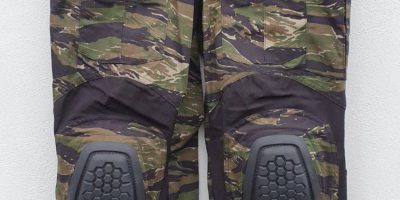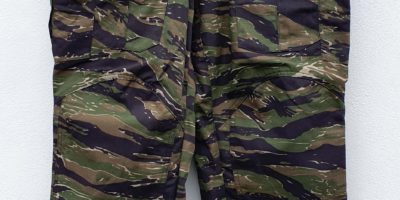Seeing an awful lot of people online/out on the actual streets shockingly under prepared for the unprecedented snowfall we’ve had here in the UK.
I removed (by various means) a blanket of a good 6″ of snow off my car roof and windscreen earlier then shovelled out a channel in front of it before the sun went down in the hope said snow wouldn’t all freeze solid overnight. Then I did the same with my parents’ car. Currently crossing all my fingers that the gritters will get around to me by the time I try and go anywhere tomorrow. I’m in the suburbs of London here, so it must be a hell of a lot worse further north and in the countryside and yet even here the sheer weight and volume of snow on my roof was genuinely impressive.
Good opportunity here of course to break out all these layering items that sit dormant through a lot of the seasons. Not that I was going on an epic trek (far from it) but I’ve learnt over the years to layer down when I’m running around and bulk up when I’m not really moving far, the latter being the case today. Also remember that regardless of the task you’ll always do a better job if you’re concentrated on said task rather than shivering and when it’s 0 or below you will get bloody cold in under 5 minutes without good insulation.
I opted for just a regular t-shirt, then grabbed my Beyond Clothing A3 Alpha jacket, which was one of their entirely civvie looking variants in grey with no loop fields; thin nylon shell with a thin layer of light Polartec alpha. In terms of insulation it would be rivalled by some thicker L2 items that are considered base, but the A3 also packs down to nothing. Next, since I was going all out, on top of that I went for the Snugpak Original Sleeka that I picked up from PLATATAC in a sale a while back. For those who are familiar the Sleeka is a lot like the Brit issued softie jacket, only the construction is overall a step above in quality. It’s a big and ‘puffy’ PCU L7 equivalent and with the full roll-out of all the layers in PCS a similar jacket now seems to be standard issue, whereas it was deployments only in the past under CS95. I spent a large portion of my time down the Falklands with a softie jacket living almost permanently inside my smock, and for barrack wear (with just a CS95 t-shirt and shirt underneath) that was a winning combination. So I’ve got a lot of love in my heart for the softie jacket these days.
If you were to go off the PCU charts and the way the numbers work, your big puffy L7 jacket would always be the outermost layer and some people seem to imply that should be the case, but I’ve never personally found it better to have a jacket that’s all about insulation on the outside of a jacket that’s about water repellency, so fully encompassing my L3 and 7 I went with the Группа 99 | Gruppa 99 softshell L5. It’s a frequent go-to for me outside of airsoft because it may have arm pockets but it lacks arm loop and it’s not a camo pattern, not to mention of course that decent L5 shells are just immeasurably versatile. The size I ordered turned out to be a tad too long and maybe a tad roomy, which is in actually quite ideal for fully shrouding layers underneath that won’t repel external moisture. With L5 outermost you avoid having snow melting on to the very thin synthetic shell of your insulating jacket, soaking through in to the fibres that are keeping you warm and reducing their effectiveness. The ability to shed a certain amount of rain makes L5 shells very handy indeed at keeping out snow, because the fabric and treatments easily handle the small volume of water that does melt on to you.
I ended up spending a lot of time digging snow out of door handles and around wiper blades with my hands and the Sealskinz Dragon Eye gloves did pretty well overall. Considering the circulation in my hands is pretty poor compared to the average person they weren’t suffering much at all when I got back in. The synthetic leather palms were very much sodden but the insides didn’t seem to be wet. These gloves were very much a compromise purchase for me realistically since they offer good insulation but in a comparatively thin build that actually allows for manipulation of magazine catches, triggers and zips and buckles on kit. I’ve been a big fan of the classic issued leather ‘assault’ gloves for years given they are entirely waterproof, insulate fantastically and still just about allow some dexterity, so those would’ve worked even better for the task at hand given insulation was far more a priority than dexterity.
Hat wise I grabbed my trusty Outdoor Research beanie, which I believe to be their Wind Pro model. It’s a fairly thick fleece lining with a poly/spandex outer that goes around the ears like a champ while still staying just about out of your field of view. Unlike my Arc’teryx beanies which I can’t wear for more than 5 minutes without having to take off to scratch my entire scalp, the OR simply stays comfortable and doesn’t feel like it ever lets the slightest bit of heat escape your skull. If anything it almost does too good of a job.
Now is this huge over analyses for shifting some snow? Yes. But as I said at the start I’ve seen a lot of people today wearing essentially their normal fashion clothes with a basic coat chucked on top with a hat and then suffering for it. My plan at some point is to produce a decent length video explaining PCU layers (and equivalents) further and my experiences of which ones are useful and when.
I think generally in the forces people tend to have a reasonable grasp of their issued layering system – the colder it is, the more insulation, rain jacket when it rains, softie/fleeces under your smock when not running around etc etc. But that’s easier to do when you’ve been issued all that kit and most likely been forced to learn to use it through some inclement weather in phase 1 training. However there’s a tendency for the likes or airsofters and recreational shooters and other outdoors types to see anything outside of guns, plate carriers and helmets (or equivalent popular/key items in a given hobby) as uninteresting – not worth investing the time to learn about them or the money to acquire them. This often seems to apply to eye pro, good boots and any layering other than maybe a budget softshell jacket; though I use the term softshell loosely when it comes to some brands. Also very few people seem to grasp the fact that continuing to wear their regular cotton-blend camo uniforms when it’s wet and freezing is a nonsensical move. Hint – combat shirts were designed for people sweating their balls off running around in armour in the desert, they’re not in any way going to assist you in the cold, mud, rain and snow and are an inferior base layer under a shell.
I’ve no doubt there are lots of fair weather hobbyists out there and I’ve been guilty myself in the past, but there’s simply no reason to miss out on doing what you enjoy or being uncomfortable doing it for a large portion of each year if you just take a bit of time to learn about different layering options. As I say I’ll be putting together a video on this topic at some point and I’ll also be linking to a truly fantastic article over on ITS Tactical. It’s an article with a much higher word count than even this post, but this post itself will act as a fairly decent primer so that you’re not going in to the full explanation of PCU with no frame of reference. I tried that a long time ago and being a simple-minded armourer it took a lot of mental effort to genuinely grasp the key points that were being put across amongst all the detail that is provided.




Leave a Reply